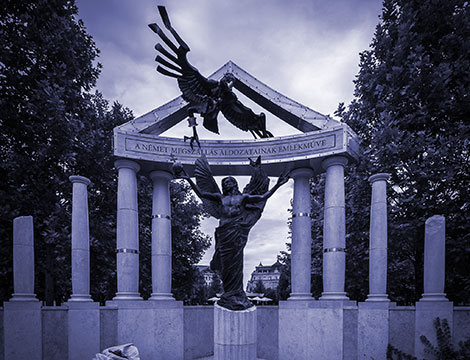
This article was originally published by the World Policy Institute on 12 July 2016
In March 2014, Budapest’s Liberty Square became home to the newest controversial monument in the city. The now-notorious German occupation monument consists of two parts: an angel and an eagle. In the middle of ivory columns lined up in a wedge, Archangel Gabriel stands with his arms wide open. His right hand is holding a golden orb, an element of the Hungarian royal insignia. His eyes are gracefully closed, as if he is fully aware of his destiny. A giant, pitch-black eagle—the symbol of Imperial Germany—ominously flies overhead. Its three-pronged claw swings as if it will snatch the orb from the angel’s hand.
Immediately after its construction, the monument was met with fierce criticism from home and abroad. Civil organizations denounced the Hungarian government, saying it was “falsifying the Holocaust” by erecting a monument that glosses over Hungary’s collusion with the Nazis. The monument comes as another expression of surging nationalism in the country, which the current government has stoked by granting voting rights to foreigners based on their Hungarian ethnicity, disseminating anti-immigrant questionnaires filled with leading questions, building fences along the country’s borders with Serbia and Croatia to block the influx of refugees, and making openly xenophobic statements against non-Christian migrants.
